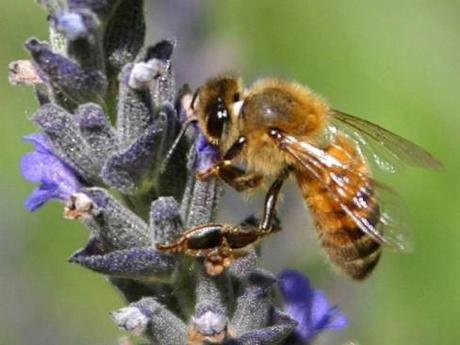According to a recent study by researchers from Leeds University in the
United Kingdom, poorer neighborhoods are far more bee friendly. When
they are on the job and looking for pollen, bees want the regular, more
pedestrian fare, not the fancy hybrids more likely found in wealthier venues.
Here's the buzz -- Dr. Mark Goddard of the School of Biology carried out this study, the first ever to look at the association between the socio-economic conditions of a neighborhood and the wild bee population. Previous studies had looked at the abundance of birds and the plant life variety. The more affluent the neighborhood, the more diversity in plants and birds. This is known as the "luxury effect." It was assumed that the same would be true of bees. This research has shown that the opposite is true.
The study showed that not only were there more bees, but more diversity in the types of bees at work. Apparently not all flowers are equal in the eyes of bees. Fancier flowers with many petals, such as the peony, have so many petals that it is difficult for the bees to get to the pollen, and there isn't enough pollen produced by the blooms to make it worth the effort. Common bedding annuals, such as marigolds, pansies, and petunias are sterile hybrids and contain very little pollen. Peer pressure among neighbors when it comes to gardens seems to be a factor in what is planted and how the yards are kept up.
However, working-class neighborhoods are more likely to have native plants such as clover, brambles, and dandelions to entice bees into the garden.
The decline of bee populations worldwide has been well-documented. All bees, regardless of variety, pollinate plants, a task that is essential to the life cycle of many plants. In some areas of China, where the bee population has nearly been wiped out, hand pollination is already necessary.
Small changes in the way people garden can make a huge impact on the conservation of bees and other pollinators. This doesn't mean leaving the yard to go to weeds. Bees love such perennial flowers as clematis, cosmos, geraniums, and roses. They are also attracted to herbs such as bee balm, cilantro, mint, lavender, sage and thyme. Most berries and fruit trees also attract bees.

